Natural Solutions for Restless Leg Syndrome (RLS)
Introduction
Restless Leg Syndrome (RLS) is one of those conditions that seem small—until it’s not. You’re lying in bed, ready for rest, but your legs won’t stop twitching, tingling, or aching. The urge to move feels irresistible. You stretch, you walk, you shake—but relief never lasts long enough.
For millions of people, this nightly battle leads to chronic insomnia, exhaustion, and anxiety around bedtime. But there’s hope: natural solutions can often bring significant relief by addressing the underlying triggers—nutrient deficiencies, inflammation, poor circulation, or nervous system imbalance.
This comprehensive guide explores what causes RLS, the most effective natural treatments, lifestyle changes that make a real difference, and how to reclaim peaceful, restorative sleep.
Looking for supplements for This? Click here.
🧠 Understanding Restless Leg Syndrome
What Is RLS?
Restless Leg Syndrome (also called Willis-Ekbom disease) is a neurological condition characterized by uncomfortable sensations in the legs and an uncontrollable urge to move them—especially at night or when resting.
Common sensations include:
Tingling or “pins and needles”
Itching or crawling feelings
Burning or pulling sensations
Deep, restless aches
The discomfort usually improves temporarily with movement but returns when you try to relax again.
How Common Is It?
RLS affects about 7–10% of the population, and women are nearly twice as likely as men to experience it. It can appear at any age but often worsens with age or during pregnancy.
The Root Causes of RLS
While genetics play a role, research shows RLS often arises from a combination of biochemical imbalances and lifestyle factors:
Iron deficiency in the brain 🩸
Iron helps regulate dopamine—a neurotransmitter crucial for motor control. Low brain iron leads to misfiring of nerve signals that trigger the urge to move.
Low dopamine levels 🧬
Dopamine dysfunction disrupts nerve communication, particularly in brain regions controlling movement.
Magnesium or B-vitamin deficiencies 💊
These nutrients help relax muscles and stabilize nerve signaling.
Inflammation or oxidative stress 🔥
Chronic inflammation in the nervous system increases irritability of peripheral nerves.
Poor circulation and lymph flow 💧
Sitting long hours or low physical activity can worsen symptoms.
Medication or caffeine effects ☕
Antidepressants, antihistamines, or stimulants sometimes worsen RLS symptoms.
🌿 Step 1: Key Nutrients That Calm RLS

Let’s start with the biological foundation: replenishing missing nutrients that regulate nerve and muscle relaxation.
💊 Iron
Low iron—especially in the brain—is one of the most documented RLS triggers. Even if blood tests show “normal” levels, ferritin (the stored form of iron) may be insufficient for optimal dopamine regulation.
What to do:
Ask your doctor to check ferritin, iron, TIBC, and transferrin saturation.
Target ferritin levels between 75–100 µg/L for RLS relief.
Pair iron with vitamin C for better absorption.
Food sources:
Grass-fed beef, bison, or liver
Lentils, spinach, pumpkin seeds
Quinoa and blackstrap molasses
(Avoid taking iron with calcium, tea, or coffee—they inhibit absorption.)
🧘 Magnesium
Magnesium relaxes muscles, balances electrolytes, and supports nerve transmission. Deficiency leads to cramping, twitching, and overactive muscles—classic RLS sensations.
Best forms for RLS:
Magnesium glycinate (for calmness and sleep)
Magnesium threonate (crosses the blood-brain barrier)
Dosage: 200–400 mg before bed.
Bonus tip: Combine magnesium with glycine or taurine for deeper relaxation.
🌻 Vitamin D
Low vitamin D correlates with increased RLS severity. It regulates dopamine synthesis and helps with muscle function.
How to optimize:
Aim for 60–80 ng/mL (150–200 nmol/L) in blood tests.
Get sunlight exposure daily or supplement with 2000–4000 IU vitamin D3.
Pair with vitamin K2 for calcium balance.
🌾 B Vitamins (Especially B6, B9, and B12)
B vitamins support nerve repair and neurotransmitter production. Deficiencies can increase nerve excitability, worsening RLS.
Sources:
Eggs, salmon, leafy greens, chickpeas, nutritional yeast
Methylated B-complex supplements for better absorption
🍌 Potassium & Calcium
These minerals work with magnesium to maintain healthy muscle contraction and relaxation cycles.
Try adding:
Bananas, avocado, coconut water (potassium)
Sardines, sesame seeds, kale (calcium)
🌙 Step 2: Herbal and Botanical Support
Several herbs have been used traditionally to ease RLS symptoms by calming the nervous system and improving circulation.
🌼 Valerian Root
Valerian enhances GABA activity, helping muscles relax and nerves calm down.
How to use:
400–600 mg extract before bed or as herbal tea.
Combine with chamomile or lemon balm for a sleep blend.
🌿 Passionflower
This herb reduces nervous agitation and eases restlessness—ideal for anxiety-driven RLS.
How to use:
Tea: 1 tsp dried herb steeped 10–15 minutes.
Supplement: 300–500 mg before bed.
🌸 Chamomile
Gentle but powerful, chamomile contains apigenin, which binds to GABA receptors to promote calm.
How to use:
Drink 1–2 cups nightly as tea.
Try a warm chamomile compress on calves before bed.
🍃 Lemon Balm (Melissa officinalis)
Supports both mood and muscle relaxation. Great for those with anxiety-related RLS.
How to use:
Tea or tincture before bedtime.
Combine with magnesium for synergistic calm.
🌾 Ashwagandha
An adaptogen that regulates cortisol, improving evening relaxation and dopamine balance.
How to use:
300–500 mg root extract daily, taken in the evening.
🍄 Reishi Mushroom
Supports the parasympathetic (rest-and-digest) system and improves sleep quality.
How to use:
Add reishi powder to herbal tea or warm almond milk 1–2 hours before bed.
🌹 Lavender
Lavender essential oil reduces anxiety and muscle tension through aromatherapy.
How to use:
Diffuse oil in the bedroom
Add 5 drops to an Epsom salt bath
Massage diluted oil into legs before sleep
Looking for supplements for This? Click here.
💧 Step 3: Circulation and Movement
RLS often worsens when circulation is poor. Movement and circulation support can dramatically reduce nighttime leg discomfort.
🚶 Gentle Stretching
Stretching calves and hamstrings before bed improves blood flow and reduces muscle contractions.
Try:
Calf raises
Leg extensions
Forward folds
Ankle circles
💆 Massage and Warm Compress
Massaging legs with magnesium oil, arnica, or lavender oil can relieve symptoms by improving circulation and reducing inflammation.
Alternative:
Use a heating pad or warm towel on the calves for 10–15 minutes before sleep.
🛁 Epsom Salt Bath
Rich in magnesium sulfate, an Epsom salt bath helps muscles absorb magnesium transdermally.
How to:
Add 2 cups of Epsom salts to warm water
Soak for 20 minutes
Follow with a quick cool rinse to balance blood flow
🧊 Contrast Therapy
Alternate warm and cool compresses to stimulate circulation and calm nerves. This helps reduce the “electric” leg sensations at night.
💤 Step 4: Sleep and Nervous System Reset

Since RLS peaks during rest, training your nervous system for deeper sleep can dramatically ease symptoms.
🌬️ Breathwork for Calm Legs
When you feel the urge to move, instead of resisting, shift into coherent breathing—5–6 breaths per minute.
Try this rhythm:
Inhale 5 sec
Exhale 5 sec
Continue for 5 minutes
This lowers sympathetic overactivity and restores vagal calm.
Want to try Breathwork? Click Here.
🧘 Meditation or Yoga Nidra
Mind-body relaxation practices reduce hyperarousal in the nervous system.
A 2020 study found that mindfulness meditation improved sleep and reduced perceived RLS severity.
Try:
Yoga nidra guided audio before bed
Body-scan meditation focusing on leg relaxation
📵 Sleep Hygiene
Consistent sleep signals help retrain your brain.
✅ Keep bedtime/wake time consistent
✅ Avoid caffeine after noon
✅ Use blackout curtains and a cool room (18–20°C / 65–68°F)
✅ Avoid scrolling before bed—blue light suppresses melatonin
🧩 Step 5: Diet and Gut Connection
RLS links closely with gut health and inflammation, especially when nutrient absorption is impaired.
🍎 Anti-inflammatory diet
Focus on foods that lower inflammation and support circulation:
Fatty fish (salmon, sardines)
Olive oil, avocado, nuts
Leafy greens, berries, turmeric, ginger
Avoid:
Processed sugar and refined carbs
Excess alcohol or caffeine
Artificial sweeteners (which may overstimulate nerves)
🥦 Iron absorption boosters
Include vitamin C-rich foods with every meal to enhance iron uptake—like citrus, bell peppers, or kiwi.
🥛 Avoid common triggers
Some people notice worsening RLS from:
Gluten sensitivity
High-sugar snacks
Excessive dairy or nightshades (tomatoes, peppers)
Try an elimination diet for 2–3 weeks to spot triggers.
🧠 Step 6: Addressing Stress and Emotional Factors
Chronic stress fuels RLS by keeping your nervous system on high alert. Calming emotional reactivity helps your body stay in parasympathetic mode at night.
🌿 Breathwork + Herbs Stack
Combine L-theanine (100–200 mg) or magnesium glycinate with slow breathing before bed for dual calming of brain and body.
💬 Therapy Techniques
Cognitive-behavioral therapy (CBT) can help reduce nighttime worry and anxiety around sleep—a major aggravator of RLS.
Looking for online therapy ? Click Here.
💞 Grounding Practices
Gratitude journaling
Gentle touch or self-massage
Weighted blankets for sensory comfort
🧘 Step 7: Physical Activity That Helps
Moderate daily movement reduces RLS symptoms more effectively than over-exercising or being sedentary.
Best forms of exercise:
Walking 🚶
Swimming 🏊
Yoga 🧘
Cycling 🚴
Avoid intense late-evening workouts—they may increase leg stimulation.
💊 Step 8: Supplement Stack for RLS Relief
| Supplement | Dose | Timing | Key Benefit |
|---|---|---|---|
| Magnesium glycinate | 200–400 mg | Evening | Muscle and nerve calm |
| Iron (if low ferritin) | 25–65 mg | Morning + Vitamin C | Dopamine regulation |
| Vitamin D3 + K2 | 2000–4000 IU | Morning | Neuromuscular function |
| Ashwagandha | 300 mg | Evening | Stress and cortisol balance |
| Valerian or Passionflower | 400 mg / 300 mg | Bedtime | Natural sleep aid |
Always introduce one supplement at a time and consult a healthcare provider.
🌙 Step 9: Nighttime Ritual for Calm Legs
Your nightly ritual can retrain your nervous system toward deep rest.
Example Routine (30–60 minutes before bed):
Drink herbal tea (chamomile + lemon balm)
Do 5 minutes of stretching or yoga
Take magnesium supplement
Diffuse lavender oil
Lie down and practice 4-7-8 breathing
Visualize warmth spreading through your legs
Over time, your body learns: night = safety.
💡 Step 10: When to Seek Professional Help
If symptoms persist despite natural approaches, consult your doctor. You may need:
Iron infusions (for low ferritin unresponsive to oral iron)
Low-dose dopamine agonists
Gabapentin or pregabalin for nerve overactivity
Combining medical support with natural strategies often brings the best long-term relief.
❤️ Final Thoughts
Restless Leg Syndrome can feel like your own body is rebelling against rest—but it’s really a signal: your nervous system and nutrient balance need care.
Healing doesn’t happen overnight, but with consistency—nutrient restoration, herbal calm, breathwork, and sleep rituals—you can retrain your body toward stillness again.
When your legs finally quiet and your breath slows under the covers, you’ll realize something powerful:
“My body isn’t fighting me—it’s learning to feel safe again.” 🌙
📚 References
Allen, R. P., & Earley, C. J. (2007). The role of iron in Restless Legs Syndrome. Movement Disorders, 22(S18), S440–S448.
Trenkwalder, C. et al. (2016). Restless Legs Syndrome: pathophysiology, clinical features, and diagnosis. The Lancet Neurology, 15(11), 1167–1178.
Li, Y. et al. (2019). Vitamin D and RLS: A systematic review and meta-analysis. Sleep Medicine, 58, 50–56.
Ekbom, K. (2014). Dopaminergic dysfunction in RLS. Sleep Medicine Reviews, 18(2), 153–162.
Kushida, C. A. (2006). Clinical management of Restless Legs Syndrome. The Journal of Clinical Sleep Medicine, 2(4), 403–412.
Ngan, A., & Conduit, R. (2011). Effects of passionflower on sleep quality. Phytotherapy Research.
Boyle, N. B., et al. (2017). Magnesium supplementation and sleep quality: a review. Nutrients, 9(9), 997.
Oken, B. S., et al. (2021). Mindfulness and sleep improvement. Sleep Health, 7(1), 7–18.
Related Posts
-

Supplements to Stay Calm Before Public Speaking
Breathwork is one of the simplest yet most powerful tools for calming pre-performance stress 🌬️. By slowing and deepening your breathing, you lower cortisol, steady your heartbeat, and re-center your mind. Learn the science behind how controlled breathing activates your parasympathetic nervous system — helping you speak, perform, or focus with grounded confidence. 🌿
-
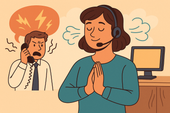
How to Handle Customer Service Stress Without Losing Your Cool 💬🧘♀️
Customer service can test even the calmest person’s patience. 😤 Learn how to handle difficult clients and daily pressure without losing your cool — through better mindset management, calming breathwork, and practical communication tools. Stay grounded, protect your energy, and transform stress into strength. 🌿
-
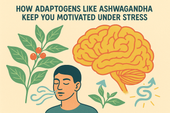
How Adaptogens Like Ashwagandha Keep You Motivated Under Stress
Feeling overwhelmed and unmotivated? 🌿 Discover how adaptogens like Ashwagandha can help you stay centered, focused, and energized under stress. Learn how supplements, breathwork, and therapy work together to restore your natural motivation and help you thrive — even during life’s toughest moments. 💪✨
-
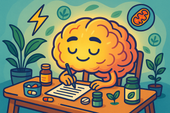
Supplements That Support Long-Term Productivity Without the Crash ⚡🌿
Cortisol — your body’s main stress hormone — can be both your best friend and worst enemy. ⚡ When balanced, it keeps you focused, energized, and ready to act. But when it stays high for too long, it leads to fatigue, anxiety, and emotional crashes. Learn how to regulate cortisol naturally through supplements, sleep, and stress management to maintain calm, steady productivity. 🌿
-
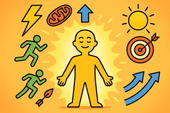
Why Energy Levels and Motivation Go Hand in Hand ⚡🧠
B-vitamins are the brain’s spark plugs 🔋. They turn food into fuel, support neurotransmitter production, and keep your mood, energy, and focus balanced. Learn how vitamins like B6, B9, and B12 work together to power the nervous system, reduce fatigue, and keep motivation high. 🌿
-
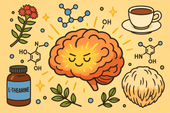
The Science of Motivation: Can Nootropics Help You Stay Focused? 🧠⚡
Nootropics are nature’s tools for sharper thinking and sustainable focus 🧠🌿. From Rhodiola and Lion’s Mane to L-theanine and Bacopa, these brain-boosting compounds enhance motivation, memory, and stress resilience. Learn the science behind how nootropics work — and how to use them safely for peak mental performance and clarity. ⚡
-
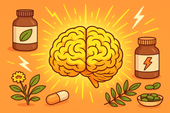
How Natural Supplements Can Boost Your Daily Drive
Cortisol is your body’s main stress hormone — powerful, necessary, but often misunderstood. ⚡ When balanced, it keeps you alert and energized; when chronically elevated, it drains mood, motivation, and focus. Learn how to regulate cortisol naturally through nutrition, supplements, and calming lifestyle habits for steady energy and emotional balance. 🌿
-
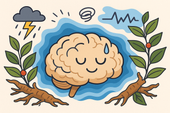
Ashwagandha for Stress and Low Mood
Breathwork is more than a relaxation tool — it’s a way to rewire your nervous system. 🌬️ Through intentional breathing, you can reduce stress hormones, improve focus, and calm emotional turbulence. This guide explores the science of breathwork and its powerful effects on mental clarity, resilience, and emotional regulation. 🌿
-
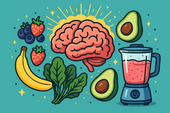
Mood-Boosting Smoothie Recipes
Your blood sugar affects far more than energy — it influences mood, focus, and emotional stability too 🍎. Learn how maintaining balanced glucose levels supports brain health, reduces anxiety, and prevents emotional crashes. Discover the foods and habits that keep your mind calm and your energy steady throughout the day. 🌿
-
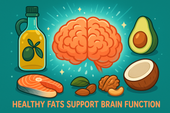
How Healthy Fats Support Brain Function
Your brain thrives on healthy fats 🧠💧. From omega-3s to MCTs, the right fats enhance focus, memory, and mood while protecting against inflammation and aging. This article explores how good fats — like those from olive oil, salmon, avocado, and nuts — build sharper thinking, emotional balance, and lasting brain vitality. 🌿
-
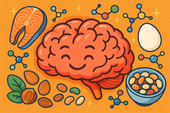
The Role of Protein in Mental Clarity
Protein isn’t just for muscles — it’s for your mind. 🧠 This guide explores how amino acids from high-quality protein fuel neurotransmitters, stabilize mood, and sharpen focus. Learn how balanced protein intake supports dopamine, serotonin, and energy regulation to boost mental clarity and emotional stability naturally. 🍳🌿
-
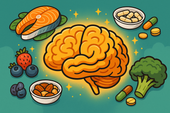
Nutrients That Support Emotional Stability
Your emotions are built from nutrients as much as from thoughts 🌿. This science-backed guide reveals the vitamins, minerals, and healthy fats that stabilize mood and reduce stress — from B-vitamins and magnesium to omega-3s and probiotics. Learn how balanced nutrition supports neurotransmitters, strengthens resilience, and promotes lasting calm and clarity 🧠✨.
-
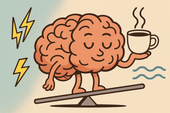
How Caffeine Affects Your Mood ☕
Your morning coffee might lift your spirits — but what’s really happening inside your brain? ☕ This in-depth guide explores how caffeine affects mood, motivation, dopamine, and stress. Learn how to enjoy caffeine mindfully without triggering anxiety, burnout, or emotional crashes. Discover the science behind your energy highs and lows — and how to find calm, sustainable focus. 🌿
-
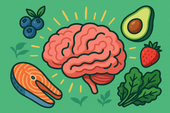
The Best Anti-Inflammatory Diet for Mental Health
Inflammation doesn’t just affect your body — it impacts your mood, focus, and emotional resilience too 🌿. This comprehensive guide reveals how an anti-inflammatory diet can support mental health by reducing neuroinflammation, balancing gut bacteria, and stabilizing blood sugar. Learn which foods to eat (and which to avoid) to protect your brain, boost serotonin, and promote lasting calm. 🧠✨
-

Why Sugar Spikes Can Worsen Depression
Sugar highs can make you feel good for a moment — but what comes next can fuel emotional crashes and deepen depression 🍭. This article explains how blood sugar spikes disrupt brain chemistry, increase inflammation, and destabilize serotonin. Learn how food, supplements, breathwork, and therapy can help you break the sugar–mood cycle and restore lasting emotional balance 🌿.
-
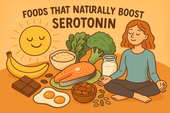
Foods That Naturally Boost Serotonin
Serotonin isn’t just a brain chemical — it’s your body’s built-in mood stabilizer 🌞. This in-depth guide explores how natural foods like salmon, eggs, bananas, and dark chocolate can elevate serotonin levels, while gut health, key nutrients, supplements, breathwork, and therapy create the perfect synergy for calm and emotional balance. Learn how to support your mind through diet, lifestyle, and mindset — naturally. 🌿
-
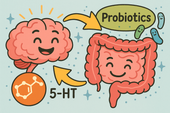
Probiotics for Mood Balance
-
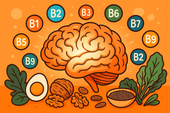
B-Vitamins and Their Role in Mental Health
Methylation is one of your body’s most important biochemical processes — influencing mood, energy, and focus. Powered by B-vitamins like B6, B9, and B12, it helps your brain create serotonin, detox efficiently, and maintain emotional balance. 🌿
-
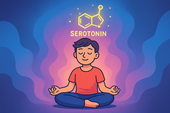
5-HTP for Serotonin Support
Calm isn’t just an emotion — it’s a physiological state where your body and mind finally sync in peace. By slowing your breath, softening your thoughts, and creating safety within, you restore the deep relaxation your nervous system craves. 🌿
-
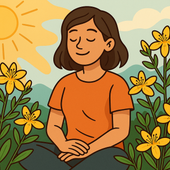
St. John’s Wort for Mild Depression
Antidepressants can be life-changing for many — but understanding how they work and what natural options like St. John’s Wort can complement them is key. Learn how both approaches affect brain chemistry, mood balance, and long-term emotional wellness. 🌿
-
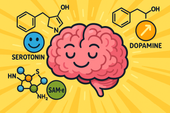
SAM-e: A Natural Mood Booster
Emotional regulation is the art of staying calm and grounded, even when life feels chaotic. By balancing your brain, body, and breath, you can respond with clarity instead of reacting from stress — building real emotional resilience and inner peace. 🌿
-

Rhodiola Rosea for Emotional Resilience
Neuroplasticity is your brain’s ability to grow, adapt, and heal — even after stress or trauma. Every thought, emotion, and habit reshapes your neural pathways, helping you build stronger emotional resilience, sharper focus, and lasting mental balance. 🌿
-
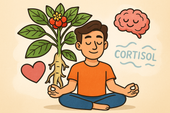
Ashwagandha for Stress and Low Mood
Adaptogens are nature’s stress balancers — powerful herbs like ashwagandha, rhodiola, and reishi that help your body adapt to tension, fatigue, and change. By regulating cortisol and supporting your nervous system, they build calm focus and emotional resilience from the inside out. 🌙
-
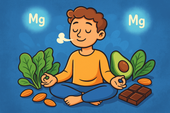
Magnesium’s Role in Emotional Regulation
Neuroscience helps us understand why we feel, think, and react the way we do. From brain chemistry and neural circuits to stress responses and emotional learning, the science of the brain reveals how our minds can heal, grow, and find balance. 🌿
-
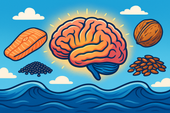
Omega-3 Fatty Acids and Emotional Well-Being
Nutrients aren’t just fuel — they’re communication signals that tell your brain and body how to function. From magnesium and vitamin D to omega-3s and B vitamins, the right mix of nutrients helps calm your mind, balance hormones, and support emotional and physical well-being. 🌙
-
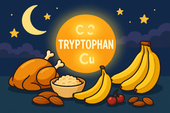
The Role of Tryptophan in Sleep Health
Mental health isn’t just the absence of illness — it’s the foundation of calm, focus, and emotional resilience. From managing stress and anxiety to nurturing self-compassion, understanding your mental well-being is the first step toward a balanced, more peaceful life. 🌿
-

Nutrients That Promote Nighttime Relaxation
Potassium does more than balance fluids — it also helps your body and mind relax at night. By calming nerves, reducing muscle tension, and supporting steady heart rhythm, potassium-rich foods like bananas, sweet potatoes, and coconut water can promote deeper, more restful sleep. 🌙
-
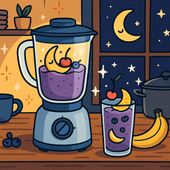
Sleep-Friendly Smoothie Recipes
Melatonin is your body’s natural sleep signal — a hormone that tells your brain when it’s time to rest. Learn how melatonin works, which foods and habits boost its production, and how to use it wisely for deeper, more restorative sleep without dependence. 💤
-
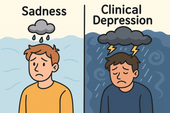
The Difference Between Sadness and Clinical Depression
Your emotions aren’t just in your mind — they’re written in your brain chemistry. Serotonin, dopamine, and GABA work together to regulate mood, motivation, and calm. When they fall out of balance, you may feel anxious, fatigued, or low. Learn how these brain chemicals influence your mental health and what you can do to restore harmony naturally. 🌿
-
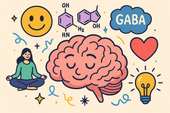
How Brain Chemistry Influences Mood
Your brain is a symphony of neurotransmitters — serotonin, dopamine, GABA, and more — working together to shape how you think and feel. When they’re balanced, you experience calm focus and emotional stability. When they’re not, mood swings and fatigue can follow. Learn how to naturally support these vital messengers for better mood and mental clarity. 🌿
-
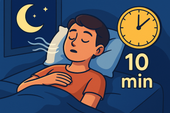
How to Fall Asleep in Under 10 Minutes
The military knows a few secrets about falling asleep fast — and they work even in chaos. This article explores the science behind rapid relaxation, including the famous “Military Sleep Method,” which teaches your body to shut down stress and rest on command. Learn how discipline, breath, and focus can help anyone fall asleep in minutes. 🌙
-
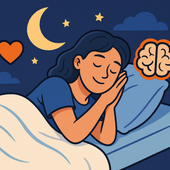
Why Emotional Resilience Improves Sleep
Emotional resilience isn’t just about mental strength—it’s also a key ingredient for better sleep. When your emotions are balanced, your body releases fewer stress hormones, your mind quiets faster, and your sleep becomes deeper and more restorative. Learn how to cultivate calm through mindset, breathwork, and daily habits. 🌙
-
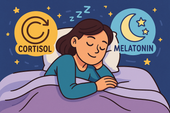
The Connection Between Stress Hormones and Sleep
Chronic stress can quietly reshape your body’s chemistry, raising cortisol, disrupting sleep, and draining your energy. This guide explores how long-term stress affects your nervous system, hormones, and rest—and how to restore calm through breathwork, nutrition, and daily recovery rituals. 🌿
-

How Shift Workers Can Improve Sleep Quality
For shift workers, caffeine can be both a lifeline and a sleep disruptor. Learn how to use it strategically—boosting alertness during work hours without sabotaging rest. This guide explores timing, dosage, and smarter natural alternatives to keep your energy steady and your sleep restorative. 🌙
-
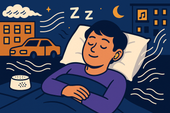
How to Sleep Better in a Noisy Environment
Living in a noisy area doesn’t mean sacrificing your rest. Learn practical and natural strategies to sleep better in loud environments—from using sound masking and breathwork to creating calming rituals that help your brain tune out the chaos. Find inner silence even when the world outside won’t quiet down. 🌙
-
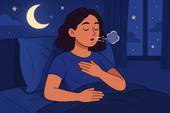
How to Overcome Middle-of-the-Night Anxiety
Middle-of-the-night anxiety can make even the calmest mind spiral into worry. This guide reveals practical, evidence-based techniques to help you stop the 3 A.M. overthinking loop—from breathwork and journaling to herbal supplements and therapy-based tools. Learn to retrain your nervous system and find peace when the world is asleep. 🌙
-
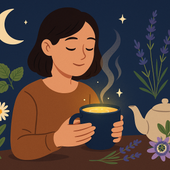
The Perfect Evening Herbal Blend
Discover the calming power of nature in your teacup. The perfect evening herbal blend combines chamomile, lemon balm, lavender, and adaptogens like ashwagandha to relax your body and quiet your mind before bed. Learn how to craft and customize a soothing, sleep-enhancing tea ritual that helps you unwind, restore, and wake up refreshed. 🌙
-
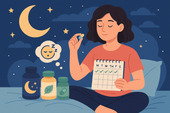
How to Cycle Sleep Supplements for Maximum Effectiveness
Wondering why your sleep supplements stop working after a while? This guide breaks down how to cycle sleep aids like melatonin, magnesium, and ashwagandha for consistent, long-term results. Learn when to rest your body, how to prevent tolerance, and what natural methods—like breathwork and therapy—enhance your sleep cycles. 🌙
-
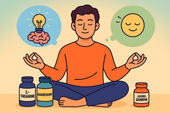
The Best Supplements for Both Relaxation and Focus
Calm your mind and sharpen your focus with the perfect blend of natural supplements. From L-theanine and magnesium to Rhodiola and Lion’s Mane, this science-based guide shows how to achieve relaxation and clarity at the same time. Discover stacks that support your nervous system, balance mood, and keep your mind laser-focused without the crash. 🌿
-
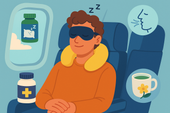
How to Sleep Better During Travel
Traveling can be thrilling—but sleepless nights can ruin even the best trips. From supplements like magnesium and melatonin to soothing breathwork and therapy-based techniques, this guide shows you how to sleep deeply on planes, in hotels, or across time zones. Learn to calm your body, reset your circadian rhythm, and build rest rituals that work anywhere in the world 🌙
-
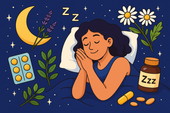
Improving Sleep in Menopause with Supplements
Menopause can make peaceful sleep feel impossible — but balance is within reach 🌿. This article explores how supplements like magnesium, ashwagandha, and black cohosh can ease night sweats, calm the mind, and restore your natural sleep rhythm during hormonal changes.
-
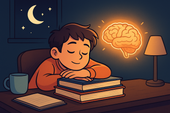
Sleep Support for Students During Exams
Exam stress can make it hard to rest — but sleep is what helps you perform your best 💤. This article explains how to improve sleep quality during exams through better study habits, natural supplements, breathwork, and therapy tools to calm the mind and sharpen focus.
-

Rest Strategies for Entrepreneurs
Entrepreneurs often burn out chasing their vision — but rest is the real fuel for success 🌙. This article explores science-backed recovery strategies for founders, including sleep, breathwork, therapy, and nutrition techniques that sharpen creativity and sustain performance.
-

How Sleep Affects Athletic Recovery
Sleep is where strength is built. 💤 This article explores how deep sleep drives muscle recovery, hormonal balance, and athletic performance — plus how supplements like magnesium, melatonin, and ashwagandha can enhance overnight repair and boost training results.
-

Better Sleep for People with Chronic Pain
Living with chronic pain makes sleep feel impossible — but it’s not. 🌙 This article explores how pain disrupts rest and how to rebuild your sleep through gentle breathwork, calming nutrition, therapy, and supplements that help your body relax and heal.
-

How to Sleep Better During Seasonal Changes
Seasonal shifts can throw your sleep off balance 🌦️. This article explains how light, temperature, and hormones change with the seasons — and how to restore your rhythm naturally through melatonin-supportive foods, breathwork, and therapy for emotional balance.
-

Foods That Naturally Boost Melatonin
Want to fall asleep faster without supplements? 🌙 This article explores how foods like tart cherries, pistachios, and kiwi naturally boost melatonin, the hormone that regulates sleep. Learn how to build an evening meal plan — plus simple rituals like breathwork and herbal tea — to improve rest and reset your circadian rhythm.
-

The Role of Herbal Tea in Relaxation
Herbal tea is more than comfort in a cup 🍵 — it’s nature’s gentle way to calm the mind and relax the body. This article explores how teas like chamomile, lavender, and lemon balm support stress relief, sleep quality, and emotional balance — plus how to pair them with magnesium, breathwork, and mindful rituals for deeper peace.
-

Lavender Extract and Its Calming Effects
Lavender extract is one of nature’s most soothing remedies 🌸. This article explores how lavender calms the nervous system, lowers cortisol, and improves sleep — plus how to combine it with magnesium, breathwork, and therapy for deep relaxation and emotional balance.

















































